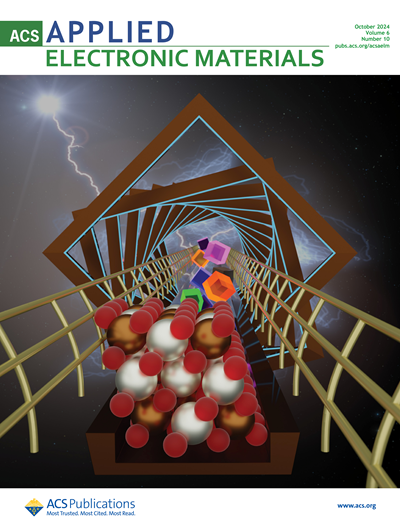Late Jurassic Tethyan igneous records in North Sumatra: Geochronological and geochemical constraints
IF 4.7
3区 材料科学
Q1 ENGINEERING, ELECTRICAL & ELECTRONIC
引用次数: 0
Abstract
The Jurassic igneous rocks on Sumatra Island are important for investigating the Mesotethyan evolution and regional correlation in Southeast Asia. This paper presents new laser ablation−multicollector−inductively coupled plasma−mass spectrometry zircon U-Pb-Hf geochronological and isotopic, whole-rock elemental, and Sr-Nd isotopic data for the newly identified Glebruk dolerite and andesite in North Sumatra. New zircon dating results suggest that these mafic−intermediate volcanic rocks, with ages of 150−146 Ma, were formed during the Late Jurassic. The Glebruk dolerite and andesite belong to the calc-alkaline series, are enriched in the light rare earth elements, and exhibit depletion in Nb, Ta, and Ti. Thus, they resemble arc-like volcanic rocks. They have low (87Sr/86Sr)i ratios of 0.7038−0.7048 and strong positive εNd(t) and εHf(t) values of +6.4 to +7.5 and +4.8 to +18.6, respectively. Their geochemical signatures suggest that these Late Jurassic volcanic rocks were derived from a depleted mantle wedge that was metasomatized by the slab-derived melts. The Glebruk volcanic rocks were formed in a continental arc setting in response to the Late Jurassic northward subduction of the Woyla Ocean beneath West Sumatra. Our results and regional geological observations suggest that the Mesotethyan subduction-related igneous rocks could extend from South Qiangtang through West Yunnan to North Sumatra. The Woyla Ocean could represent the southern extension of the Mesotethyan Ocean.北苏门答腊晚侏罗世哲罗纪火成岩记录:地质年代和地球化学制约因素
苏门答腊岛上的侏罗纪火成岩对研究东南亚的中统演化和区域相关性具有重要意义。本文介绍了新发现的北苏门答腊 Glebruk 辉绿岩和安山岩的激光烧蚀-多收集器-电感耦合等离子体-质谱法锆石 U-Pb-Hf 地球时序学和同位素、全岩元素和 Sr-Nd 同位素数据。新的锆石测年结果表明,这些年龄在150-146 Ma之间的中黑云母火山岩形成于晚侏罗世。Glebruk 辉绿岩和安山岩属于钙碱性系列,富含轻稀土元素,并显示出 Nb、Ta 和 Ti 的贫化。因此,它们类似于弧状火山岩。它们的(87Sr/86Sr)i比值较低,为0.7038-0.7048,εNd(t)和εHf(t)分别为+6.4至+7.5和+4.8至+18.6。它们的地球化学特征表明,这些晚侏罗世火山岩来自贫化的地幔楔,而地幔楔被板块衍生的熔融物变质。格勒布鲁克火山岩是在西苏门答腊岛下方的沃伊拉洋晚期侏罗纪向北俯冲的大陆弧环境中形成的。我们的研究结果和区域地质观测结果表明,与中生代俯冲有关的火成岩可能从南羌塘经滇西延伸至北苏门答腊。窝依拉洋可能代表了中条山洋的南延。
本文章由计算机程序翻译,如有差异,请以英文原文为准。
求助全文
约1分钟内获得全文
求助全文
来源期刊

ACS Applied Electronic Materials
Multiple-
CiteScore
7.20
自引率
4.30%
发文量
567
期刊介绍:
ACS Applied Electronic Materials is an interdisciplinary journal publishing original research covering all aspects of electronic materials. The journal is devoted to reports of new and original experimental and theoretical research of an applied nature that integrate knowledge in the areas of materials science, engineering, optics, physics, and chemistry into important applications of electronic materials. Sample research topics that span the journal's scope are inorganic, organic, ionic and polymeric materials with properties that include conducting, semiconducting, superconducting, insulating, dielectric, magnetic, optoelectronic, piezoelectric, ferroelectric and thermoelectric.
Indexed/Abstracted:
Web of Science SCIE
Scopus
CAS
INSPEC
Portico
 求助内容:
求助内容: 应助结果提醒方式:
应助结果提醒方式:


